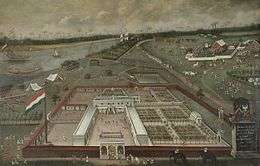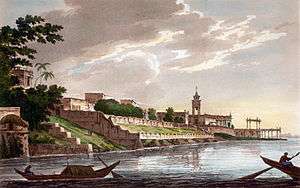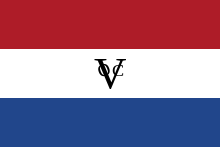Dutch Bengal
| Dutch Bengal | ||||||||||
| Bengalen | ||||||||||
| Dutch colony | ||||||||||
| ||||||||||
| ||||||||||
| Capital | Pipely (1627-1635) Hugli-Chuchura (1635-1825) | |||||||||
| Languages | Dutch | |||||||||
| Political structure | Colony | |||||||||
| Director | ||||||||||
| • | 1655-1658 | Pieter Sterthemius | ||||||||
| • | 1724-1727 | Abraham Patras | ||||||||
| • | 1785-1792 | Isaac Titsingh | ||||||||
| • | 1792-1795 | Cornelis van Citters Aarnoutszoon | ||||||||
| Historical era | Imperialism | |||||||||
| • | Establishment of a trading post at Pipely | 1627 | ||||||||
| • | Anglo-Dutch Treaty of 1824 | 1825 | ||||||||
| ||||||||||
Bengal was a directorate of the Dutch East India Company in Bengal between 1610 until the company's liquidation in 1800. It then became a colony of the Kingdom of the Netherlands until 1825, when it was relinquished to the British according to the Anglo-Dutch Treaty of 1824. Dutch presence in the region started by the establishment of a trading post at Pipili in the mouth of Subarnarekha river in Odisha. The former colony is part of what is today called Dutch India.[1]
History


From 1615 onwards, the Dutch East India Company traded with Bengals. In 1627, a trading post was established in Pipely. In 1635 a settlement was established at Chinsurah adjacent to Hooghly to trade in opium, salt, muslin and spices. They built a fort called Fort Gustavius, a church and several other buildings. A famous Frenchman, General Perron who served as military advisor to the Mahrattas, settled in this Dutch colony and built a large house here.
Trade thrived in Bengal in the early eighteenth century, to such an extent that the administrators of the Dutch East India Company allowed Hooghly-Chinsura in 1734 to trade directly with the Dutch Republic, instead of first delivering their goods to Batavia. The only other Dutch East India Company settlement to have this right was Dutch Ceylon.
Dutch control over Bengal was waning in the face of Anglo-French rivalry in India in the middle of the eighteenth century, and their status in Bengal was reduced to that of a minor power with the British victory in the Battle of Plassey in 1757.
Dutch Bengal was occupied by British forces in 1795, owing to the Kew Letters written by Dutch stadtholder William V, Prince of Orange, to prevent the colony from being occupied by France. The Anglo-Dutch Treaty of 1814 restored the colony to Dutch rule, but with the desire to divide the Indies into two separate spheres of influence, the Dutch ceded all their establishment on the Indian peninsula to the British with the Anglo-Dutch Treaty of 1824.
Legacy
Fort Gustavius has since been obliterated from the face of Chinsurah and the church collapsed recently due to disuse, but much of the Dutch heritage remains. These include old barracks now Chinsurah Court, the Governor's residence, General Perron's house, now the Chinsurah College known as Hooghly Mohsin College and the old Factory Building, now the office of the Divisional Commissioner. Hugli-Chinsurah is now the district town of the Hooghly district in modern West Bengal.
Trading posts

Dutch settlements in Bengal include:
- Dutch settlement in Rajshahi
- In Chhapra was a salpeter factory
- Baleswar or Balasore (1675 -)
- Patna
- Cossimbazar or Kassamabazar
- Malda
- Mirzapur
- Baliapal or Pipeli, the main port for the Dutch between 1627–1635
- Murshidabad (1710–1759)
- Rajmahal
- Dhaka (1665-)
- Sherpur
See also
References
Further reading
- Lequin, Frank. (1982). Het personeel van de Verenigde Oost-Indische Compagnie in Azie in de achttiende eeuw, meer in het bijzonder in de vestiging Bengalen (The staff of the Dutch East India Company in Asia in the eighteenth century, in particular the establishment in Bengal). Thesis (Ph. D.), University of Leiden. ISBN 9789090000947; OCLC 13375077

